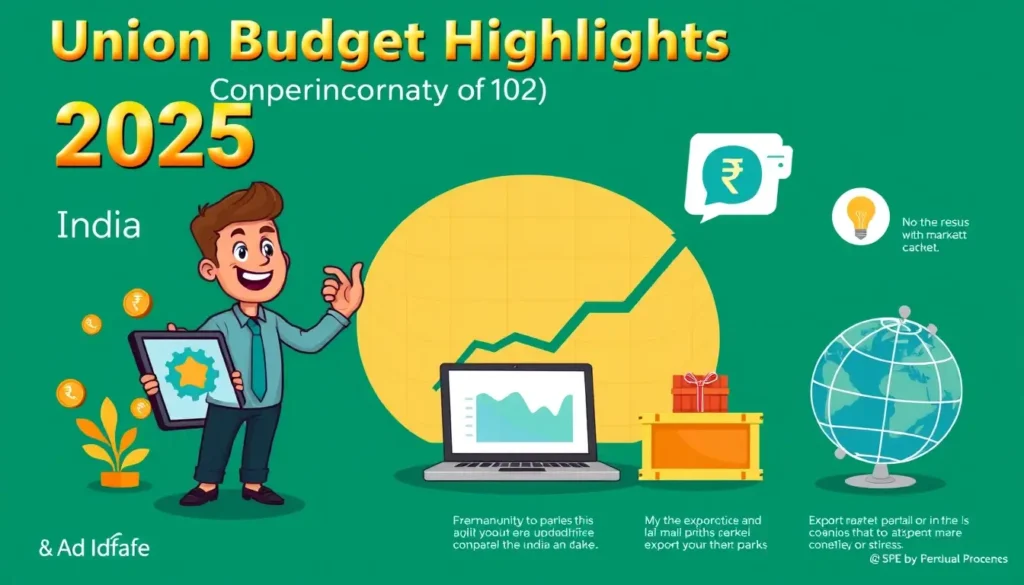
Hi friends! Let’s crack the code on the biggest tax shakeup in decades – the OECD Global Minimum Tax. If you’re part of a multinational company, this isn’t just another regulation; it’s a complete rewrite of international tax rules. We’ll walk through exactly what you must do before August 2025, why this matters for your business, and how to avoid costly penalties. No jargon, just clear steps to keep you compliant and confident!
The OECD Global Minimum Tax: Understanding the OECD tax framework
At its core, the OECD Global Minimum Tax establishes a 15% floor for corporate taxation across 140+ countries. This revolutionary framework targets multinational enterprises (MNEs) with annual revenues exceeding €750 million – roughly 90% of global corporate profits. The rules prevent profit shifting to low-tax jurisdictions through two primary mechanisms: the Income Inclusion Rule (IIR) and Undertaxed Profits Rule (UTPR). This isn’t merely a tax increase; it’s a fundamental restructuring of how multinational profits are allocated and taxed worldwide.
Understanding jurisdictional blending is crucial under these rules. Unlike traditional approaches, the OECD tax framework calculates effective tax rates by combining all entities within a jurisdiction. If a country’s blended rate falls below 15%, top-up taxes apply. The GloBE (Global Anti-Base Erosion) rules provide detailed methodologies for these calculations, including complex substance-based carveouts that exclude tangible assets and payroll costs from the tax base. These nuances make early modeling essential for accurate forecasting.
Transitional rules offer temporary relief but require strategic navigation. Many countries are implementing Qualified Domestic Minimum Top-up Taxes (QDMTTs), allowing them to capture top-up taxes before other jurisdictions apply IIR/UTPR. The complexity arises because QDMTT calculations follow local interpretations of GloBE rules, creating potential inconsistencies. Multinationals must track each jurisdiction’s implementation timeline since rules apply based on local effective dates, not OECD announcement dates.
Substance carveouts represent critical exceptions in the OECD Global Minimum Tax architecture. Companies can exclude 5% of tangible asset values and payroll costs from their GloBE income calculations during 2023-2025, phasing down to 5% by 2034. This directly benefits companies with substantial physical operations, effectively raising their minimum tax threshold. Documentation requirements for claiming these carveouts will be extensive, requiring asset registers and payroll data segmented by jurisdiction – data points many finance departments aren’t currently capturing systematically.
Key Deadlines for MNCs: August 2025 and Beyond
The August 2025 deadline looms large for MNC tax compliance teams. This marks the first filing deadline for groups with December 2024 year-ends. Countries like the UK, South Korea, and Japan have already enacted legislation taking effect January 1, 2024, meaning the initial reporting period is already underway for many. Missing this deadline triggers immediate penalties ranging from 5-25% of top-up tax liability across implementing jurisdictions, plus potential reputational damage during tax authority reviews.
Transitional safe harbor provisions offer temporary compliance shortcuts but expire strategically. The Simplified Calculations Safe Harbor allows qualifying groups to avoid full GloBE calculations through 2026 if they meet specific criteria like having all constituent entities in jurisdictions with ≥20% nominal rates. The De Minimis and ETR Safe Harbors provide similar relief but require meticulous documentation. Critically, these provisions phase out just as full implementation hits, creating a compliance valley of death in 2027 if preparations stall.

Country-by-country (CbC) reporting timelines directly impact preparation windows. Since GloBE calculations rely heavily on CbC report data, groups must align their 2024 reporting with global minimum tax 2025 requirements. Most jurisdictions require CbC reports within 12 months of year-end, creating a July-December 2025 submission window for calendar-year entities. This overlap with the August GloBE filing deadline means tax departments face parallel complex submissions with interdependent data requirements.
Penalty structures vary dangerously by jurisdiction. While the OECD provides model rules, each country sets enforcement parameters. Japan imposes penalties equal to 10% of unpaid top-up tax plus interest, while the EU’s directive allows member states to set penalties “effective, proportionate and dissuasive”. The UK’s Finance Bill 2023 specifies penalties up to £10,000 for incorrect returns plus 100% of tax avoided. This patchwork requires MNCs to monitor each jurisdiction’s penalty regime – a significant administrative burden beyond core compliance activities.
Pillar Two Implementation: What MNCs Must Know
Pillar Two implementation operates through three layered rules: the Income Inclusion Rule (IIR), Undertaxed Profits Rule (UTPR), and Qualified Domestic Minimum Top-up Tax (QDMTT). The IIR allows ultimate parent entities’ jurisdictions to tax low-taxed foreign income. The UTPR serves as backstop, permitting other countries to impose additional taxes when IIR application is insufficient. This creates unprecedented coordination requirements between tax departments and subsidiaries across multiple jurisdictions simultaneously.
Calculating Qualified Domestic Minimum Top-up Tax requires navigating local variations. While QDMTTs follow GloBE principles, countries have implemented divergent approaches. South Korea excludes certain financial income from its QDMTT base, while the UK includes capital gains. Indonesia’s draft regulations apply different depreciation methods than OECD guidelines. These discrepancies mean tax compliance for MNCs requires jurisdiction-specific calculations rather than standardized global templates. The lack of uniformity significantly increases compliance costs and audit risks.

Substance-based carveouts require granular data that many companies lack. To claim the payroll and tangible asset exclusions, companies must compile detailed registers including: asset locations, acquisition dates, carrying values, and jurisdictional payroll costs segmented by employee type. For multinational manufacturers with thousands of assets across 30+ countries, this represents a massive data governance challenge. The OECD tax rules permit using existing financial statement data initially, but require precise methodologies by 2027, forcing process upgrades now.
Transitional country-by-country reporting safe harbor offers temporary relief but demands immediate action. To qualify for 2024-2025, groups must demonstrate effective tax rates (ETR) ≥15% in every jurisdiction using CbC report data. This requires 2023 data alignment with GloBE standards – a problem since CbC reports weren’t designed for this purpose. Many companies are discovering material gaps in how they allocated income and taxes across jurisdictions, requiring system modifications before 2024 year-end reporting. The window for corrective action is closing rapidly.
Navigating OECD Tax Rules: Compliance Strategies
Successful navigation of OECD tax rules demands cross-functional task forces. Tax departments alone cannot manage the data requirements spanning finance, HR, legal, and operations. Leading companies establish dedicated Pillar Two teams with representatives from transfer pricing, financial reporting, IT, and subsidiary management. These teams typically require 12-18 months to implement necessary process changes before the 2025 deadline, making immediate mobilization critical for compliance.
Technology infrastructure upgrades are non-negotiable. Legacy tax systems cannot handle GloBE’s jurisdictional blending calculations or track required data points like employee locations and asset movements. Solutions range from ERP module enhancements (SAP’s GROW, Oracle’s Tax Reporting Cloud) to specialized platforms like Thomson Reuters ONESOURCE and Vertex. Implementation timelines average 9-14 months, with testing cycles overlapping initial reporting periods. Delaying decisions risks inability to capture 2024 data appropriately, creating permanent compliance gaps.
Managing discrepancies between local tax systems and global minimum tax 2025 rules creates accounting headaches. Many jurisdictions haven’t aligned domestic legislation with GloBE standards, creating temporary differences in income recognition. The IASB’s December 2023 amendments to IAS 12 require recognizing deferred taxes on top-up tax liabilities, adding balance sheet volatility. Tax provisioning processes must adapt to model multiple scenarios based on: QDMTT implementation status, transitional rules application, and potential tax treaty impacts – each requiring sophisticated modeling capabilities.
Documentation requirements resemble transfer pricing standards but with greater granularity. The OECD’s GloBE Implementation Framework mandates maintaining: detailed calculation workpapers, jurisdictional blending methodologies, substance carveout substantiation, and risk assessment documentation. Tax authorities expect this documentation contemporaneously upon filing, not during audits. Penalties for inadequate documentation mirror substantive errors, with Germany’s draft legislation imposing €25,000 per missing document element. This elevates record-keeping from administrative task to strategic priority.
Global Tax Policy Shifts: Implications for Multinationals
The global tax policy transformation extends beyond rate alignment. Traditional tax incentives like IP boxes and manufacturing deductions face extinction unless redesigned as qualified refundable tax credits (QRTCs). The OECD’s February 2023 guidance permits certain credits if they’re payable in cash within four years. This forces countries like Ireland and Hungary to overhaul incentive programs, creating uncertainty for companies that structured operations around them. Multinationals must model how these changes impact effective rates in key jurisdictions where incentives previously reduced rates below 15%.
Transfer pricing faces indirect but profound impacts. While Pillar Two doesn’t modify arm’s length principles, it increases scrutiny on profit allocation. Tax authorities gain powerful new tools through the UTPR to challenge structures that shift profits to low-tax jurisdictions. Additionally, the new rules create perverse incentives: groups may deliberately increase tax in low-rate jurisdictions to avoid top-up taxes elsewhere. This could lead to transfer pricing adjustments that increase local taxes but reduce global liability – a complete reversal of traditional objectives.
Permanent establishment (PE) risks intensify under the OECD tax framework. Many countries are expanding PE definitions to capture more taxable presence, partly to benefit from QDMTT revenues. The OECD’s own administrative guidance indicates that PEs will be treated as separate entities for GloBE purposes, creating compliance complexity. A sales team creating a PE could now trigger not just corporate income tax, but also top-up tax calculations for that jurisdiction. Companies must reassess market entry strategies and existing PE exposures through this new lens.
Dispute resolution mechanisms remain underdeveloped despite increased cross-border friction. The OECD’s GloBE rules lack centralized arbitration, creating potential for multiple jurisdictions claiming top-up taxes on same income. The UTPR’s “step-up” mechanism could lead to cumulative taxation exceeding 100% in extreme cases. While the OECD promises 2024 guidance on dispute prevention, companies face significant uncertainty. Proactive monitoring of tax treaty applications and mutual agreement procedures (MAP) becomes essential armor against double taxation.
Preparing for 2025: Steps for tax compliance for MNCs
Immediate risk assessment should follow four critical dimensions: entity scoping, data readiness, calculation methodology, and stakeholder alignment. Begin by identifying all entities exceeding the €750M consolidated revenue threshold using 2022-2024 data. Don’t overlook joint ventures and excluded entities – while some are exempt from calculations, their financials impact group revenue tests. Next, conduct gap analysis on 72+ data points required for GloBE calculations, prioritizing payroll registers, asset inventories, and tax credit documentation.
Technology implementation requires phased approach. Phase 1 (by Q2 2024): Implement data collection modules within existing ERPs to capture required information at source. Phase 2 (Q4 2024): Deploy calculation engines capable of jurisdictional blending and substance carveout applications. Phase 3 (Q2 2025): Install reporting modules generating OECD-standard templates and audit trails. Leading companies allocate $500K-$2M+ for these implementations, with ROI coming through penalty avoidance and reduced manual effort. Vendor selection cannot wait – implementation slots are filling through 2024.
Governance structures must evolve for MNC tax compliance. Boards require specialized training on top-up tax risks since financial statement impacts could reach 5-15% of profits for some groups. Audit committees need expanded charters covering GloBE control frameworks. Tax departments should establish quarterly compliance certification processes with subsidiary controllers, formalizing data quality responsibilities. Document retention policies must expand to preserve GloBE workpapers for minimum 10 years – exceeding standard statute limitations in many jurisdictions.
Stakeholder communication plans prevent operational disruptions. Internal messaging should align finance, legal, and operational teams on data requirements and process changes. External communications require careful coordination: investor relations must explain EPS impacts, government affairs needs to monitor local implementations, and HR should address employee concerns about location data usage. Suppliers and customers may face indirect impacts through changed pricing models as tax costs shift. Proactive engagement avoids last-minute surprises that derail compliance efforts.
FAQs: tax compliance for MNCs Qs
You’ve made it! The OECD Global Minimum Tax journey is complex, but absolutely manageable with focused action. Remember these essentials: August 2025 isn’t a distant deadline – preparation cycles start now. Technology and data form your foundation. Cross-functional alignment prevents costly oversights. While rules keep evolving, the core principles remain stable enough to act upon.
Ready for deeper insights? Subscribe for ongoing analysis as OECD guidance evolves. Got specific questions? Share them below – our expert network responds within 24 hours. Knowledge is power in this new tax era!




